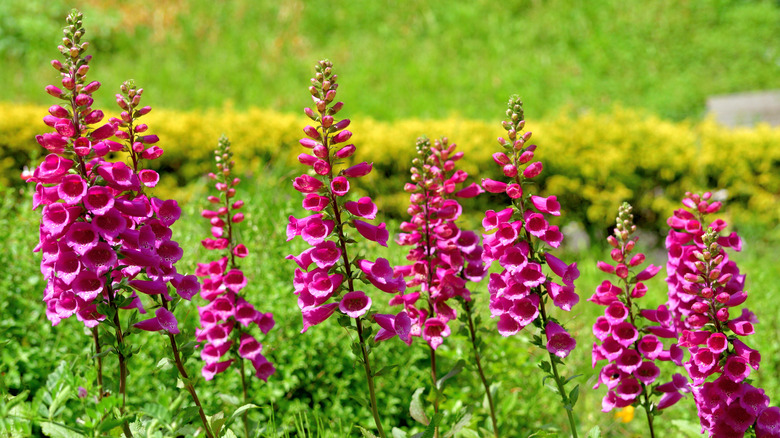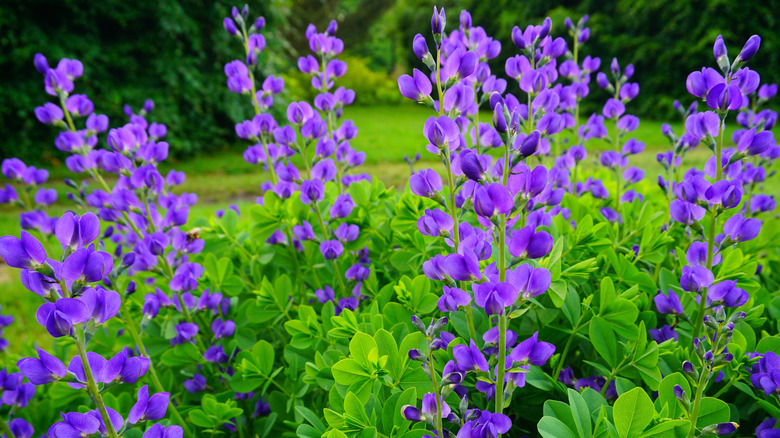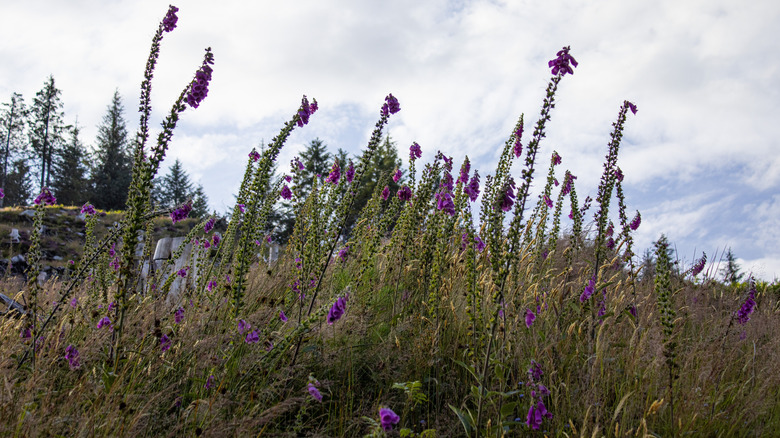Native Plant Alternatives To Grow Instead Of Invasive Foxglove For A Healthier Garden
With its tall spikes of purple, pink, or white bell-shaped flowers, common foxglove (Digitalis purpurea) has been a popular addition to flower beds for years. But the European native can spread aggressively by seed and is considered invasive in many states, especially in the Pacific Northwest and California. Instead of planting the invasive flower, consider swapping it for native plants that look just as great, but actually benefit the ecosystem.
By opting for a native, you can attract pollinators and birds to your garden, improve biodiversity, and create important habitats for vulnerable species. For example, showy goldenrod, one of the native alternatives to foxglove recommended below, is a keystone species that hosts over 50 species of butterflies and moths. By swapping out invasive foxglove for goldenrod, you not only get to enjoy gorgeous flowers, but also the abundance of butterflies and other pollinators that come to feast on the native flower's nectar and pollen. Other excellent alternatives include wild indigo, obedient plant, and cardinal flower
Choosing the best native plants to grow in your garden will depend on what kind of soil and light conditions you have, as well as the aesthetics you want. Whether you want a tall flower to add height to your flower bed or a fast-growing bloom to use in a mass planting, there are plenty of colorful wildflowers you can grow that can do the job while also providing more benefits to your local pollinators and wildlife.
Native alternatives to foxglove for your garden
In gardens, common foxglove is often used as a colorful backdrop in flower beds or as a showy border in front of walls, fences, or shrubs. It's adaptability to both full sun and partial shade also makes it a favorite for shadier gardens or flower beds underneath trees. For areas with average to wet soil, both in full sun or partial shade, some great native flowers include blue wild indigo (Baptisia australis), obedient plant (Physostegia virginiana), cardinal flower (Lobelia cardinalis), dense blazing star (Liatris spicata), and queen of the prairie (Filipendula rubra). All produce tall spikes of flowers, similar to common foxglove and reach a height ranging from about 4 to 6 feet tall.
To fill in a border quickly or create a mass planting, opt for obedient plant. Despite its name, it's actually a fairly aggressive grower that can form large clumps easily. For wet or soggy soil where nothing else wants to grow, choose cardinal flower. The moisture-loving plant tolerates flooding and thrives in consistently wet soil. The striking red flower also attracts hummingbirds. For drier areas, opt for showy goldenrod (Solidago speciosa), foxglove beardtongue (Penstemon digitalis), giant hyssop (Agastache), or soapweed (Yucca glauca).
Instead of picking just one native alternative to common foxglove, try a mix of species that bloom at different times so you can enjoy tall, striking flowers throughout the entire growing season. For example, a bed planted with blue wild indigo, cardinal flower, and showy goldenrod could provide a succession of purple, red, and yellow blooms from May through November.
Why you should avoid planting foxglove in your garden
In the United States, common foxglove is a non-native plant that can spread aggressively, forming dense patches that block out other species. This can be damaging to ecosystems, as the non-native crowds out native plants and dominates a landscape, reducing overall species diversity. Altogether, invasive plants are directly contributing to the decline of 42% of endangered and threatened native species in the United States.
As those native plants disappear, the insects and animals that rely on them for food or shelter will also be impacted. The specialist species who rely on just one or a small handful of plants are the hardest hit, but even generalists who eat almost anything are threatened by invasive takeovers. That's because the decreased diversity of plant species also means a decreased diversity of nutrients.
This is especially true for common foxglove, because it's not just invasive, but also extremely toxic. All parts of the plant — including the flowers, seeds, and leaves — contain cardiac glycosides, which are poisonous and potentially fatal to humans, pets, and other animals. So, planting common foxglove takes space away from more valuable native plants that could feed the wildlife and replaces it with a toxic plant that is of no use to them. Wildlife aside, that toxicity also poses a threat to any kids or pets that play in your yard.


